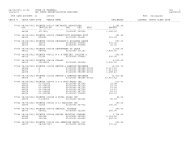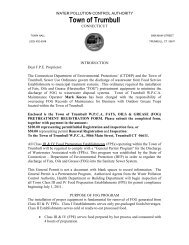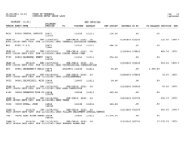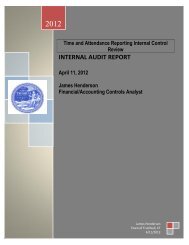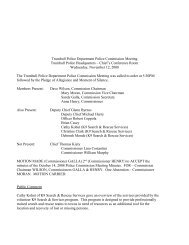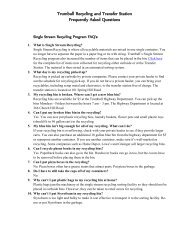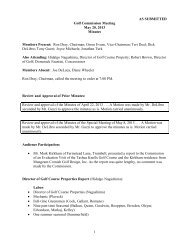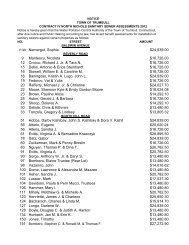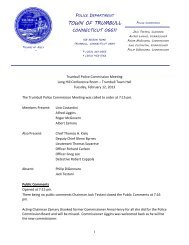Forensic Audit Report-WPCA Phase IV, Part B. Contract ... - Trumbull
Forensic Audit Report-WPCA Phase IV, Part B. Contract ... - Trumbull
Forensic Audit Report-WPCA Phase IV, Part B. Contract ... - Trumbull
You also want an ePaper? Increase the reach of your titles
YUMPU automatically turns print PDFs into web optimized ePapers that Google loves.
<strong>Forensic</strong> Consulting Services <strong>Report</strong><br />
Town of <strong>Trumbull</strong>, Connecticut<br />
Page 14<br />
It is important to note that “Ortho-photographic” type mapping is generated by utilizing aerial<br />
photography taken at various flight altitudes based on the desired needs and scale of the mapping<br />
applications being produced. These photos are then planimetrically corrected (or “orthorectified”) to<br />
produce a more accurate representation of the earths’ surface, having been adjusted for topographic<br />
relief, lens distortion, and camera tilt. A digitization process then transforms the corrected data into<br />
a usable electronic format for actual design, such as AutoCAD.<br />
One of the more important factors controlling the mapping accuracy of the end product is the flight<br />
altitude at which the original aerial photos are taken. Typically, aerial photos taken at higher<br />
altitudes produce less than desirable results, especially in relation to accurately defining topographic<br />
and physical features. Due to its limitations for accuracy and attention to detail, the higher altitude<br />
“Ortho-photographic” type of mapping is generally used and deemed more appropriate for planning<br />
purposes (100-scale and greater) and is not typically used for detailed design applications where the<br />
need for accuracy and attention to detail is more of a controlling element of the ultimate design.<br />
Also, the age of the aerial photos and the specific production techniques used to produce the<br />
digitized mapping become a factor mostly due to the overall advancements in the technology in<br />
more recent years. Simply put, securing and utilizing current aerial photography complied with the<br />
most current and advanced technology of today’s industry produces a much better and more accurate<br />
end product than that which may have existed ten to twenty years ago.<br />
In the case of <strong>Contract</strong> 3, we believe the generalized sewer design effort noted above appears to be a<br />
direct result of less than adequate and possibly outdated base mapping which was produced and used<br />
by the design engineer during the design process. As stated in the original 1996 Agreement, whether<br />
currently considered lacking or not, “these plans” were “the basis of design”. Although the design<br />
mapping used is in the specified 1-inch equal 40-foot horizontal scale, which is relatively common<br />
for utility based designs, the accuracy and attention to planimetric details is somewhat lacking (i.e.<br />
physical features, structures, drainage facilities, watercourses, utilities, vegetation, limits of<br />
pavement, etc.).<br />
To this extent, although the original 1996 Engineering Agreement clearly states items such as 2-foot<br />
contours, drainage facilities with invert elevations (i.e. manholes, catch basins, culverts, etc.),<br />
random spot elevations, existing utilities, limits of significant vegetation were to be provided as a<br />
supplement of the overall design, these attributes are limited, and in some cases nonexistent on the<br />
design drawings.<br />
Specifics of our investigations reveal the following:<br />
‣ Contours, which appear to have been required for all areas of the design contract, roadways<br />
and cross country routings alike, were only provided for cross country routings. Where<br />
contours are shown, they are not labeled in regards to any specific elevation of reference<br />
thereby leaving one to cross reference approximate elevations with the graphical elevations<br />
delineated on the design profiles.



